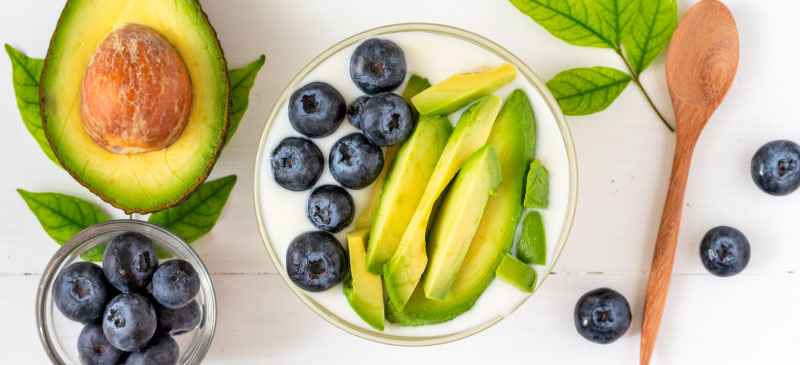This Dr. Axe content is medically reviewed or fact checked to ensure factually accurate information.
With strict editorial sourcing guidelines, we only link to academic research institutions, reputable media sites and, when research is available, medically peer-reviewed studies. Note that the numbers in parentheses (1, 2, etc.) are clickable links to these studies.
The information in our articles is NOT intended to replace a one-on-one relationship with a qualified health care professional and is not intended as medical advice.
This article is based on scientific evidence, written by experts and fact checked by our trained editorial staff. Note that the numbers in parentheses (1, 2, etc.) are clickable links to medically peer-reviewed studies.
Our team includes licensed nutritionists and dietitians, certified health education specialists, as well as certified strength and conditioning specialists, personal trainers and corrective exercise specialists. Our team aims to be not only thorough with its research, but also objective and unbiased.
The information in our articles is NOT intended to replace a one-on-one relationship with a qualified health care professional and is not intended as medical advice.
Keto Fruit: Best Low-Carb Fruits for the Ketogenic Diet
January 13, 2023

Can you eat fruit on keto? Survey a handful of keto dieters to see what they think and you’re likely to get a good mix of different opinions. While some believe that keto fruit can be consumed in moderation as an occasional indulgence, others think that it should be completely off-limits and avoided altogether.
Unlike other sugary snacks, fruit is high in fiber, which can negate many of the adverse health effects associated with consuming carbs and sugar. By being selective about which fruits to include in your diet and going for low-carb, high-fiber options, you can still enjoy the occasional serving or two of keto fruit as part of a nutritious diet.
Here’s everything you need to know about keto and fruit, plus which fruits should be included on your next keto diet food list at the supermarket.
Okay to Eat Fruit on the Keto Diet?
The ketogenic diet focuses on cutting carb consumption and increasing fat intake to reach ketosis, a metabolic state in which the body begins burning fat for energy when glucose stores are running low. This typically involves decreasing intake of high-carb foods like grains, starches, legumes and sugary snacks while increasing consumption of healthy fats such as coconut oil, olive oil, grass-fed butter and ghee.
Does fruit need to be eliminated from the diet in order to effectively achieve a state of ketosis? No, instead there are several fruits that you can consume as as part of a healthy low-carb diet, with an abundance of low-carb foods.
This is because, although fruits are typically high in carbohydrates, they’re also rich in fiber. Fiber moves through the body undigested and doesn’t affect blood sugar levels in the same way as carbohydrates. It also doesn’t spike insulin levels, meaning it can be safely enjoyed when following the ketogenic diet without impacting ketosis.
Therefore, instead of counting total carbs in your diet, it’s best to focus on net carbs, which is calculated by subtracting the grams of fiber in a food from the total grams of carbohydrates. For example, if an ingredient contains 10 grams of total carbohydrates and 2 grams of fiber, it would contain 8 grams of net carbs.
There are plenty of keto fruit options out there that are high in fiber and low in net carbs, making them an ideal addition to a well-rounded ketogenic diet. In fact, adding a few low-carb fruits to your daily diet can help satisfy your sweet tooth while also supplying a steady stream of the vitamins, minerals and antioxidants that your body needs.
So what fruits are low in net carbs and what fruit can you eat on keto? Let’s take a closer look and find out.
Top 10 Keto Fruits
Wondering what fruits can you eat on keto? When selecting which fruits to include on a ketogenic diet, it’s important to look at the number of net carbs per serving, which is calculated by subtracting the amount of fiber from the total grams of carbohydrates.
Need some ideas for which fruits you can use to help get you started? Here are a few of the top choices, plus how many net carbs are found in each serving.
1. Avocado: 2 grams net carbs/cup (and yes, it’s a fruit and is not only the lowest in net carbs, it also contains healthy keto fats)
2. Lemons: 4 grams net carbs/fruit
3. Limes: 5 grams net carbs/fruit
4. Blackberries: 6 grams net carbs/cup
5. Raspberries: 7 grams net carbs/cup
6. Strawberries: 8 grams net carbs/cup
7. Watermelon: 10.5 grams net carbs/cup
8. Cantaloupe: 11.5 grams net carbs/cup
9. Nectarine: 12.5 grams net carbs/cup
10. Peaches: 12.5 grams net carbs/cup
Keto Fruit in Moderation
Keep in mind that, although there are plenty of keto-friendly fruit options out there, consumption of fruit on the keto diet should still be limited. Even on a modified keto diet, it’s recommended to aim for around 30–50 grams of net carbs per day to maintain ketosis and maximize results. Even one or two servings of these low-carb fruits can knock out a good chunk of your daily carb allotment in one shot, effectively kicking you out ketosis.
For this reason, it’s best to fill your plate mostly with healthy fats, protein foods and non-starchy vegetables, all of which can provide a good amount of nutrients and a low amount of carbs to help optimize your diet. Avocados, along with other fats such as coconut oil, olive oil, ghee and grass-fed butter, can be used to boost your intake of heart-healthy fats to reach ketosis. However, other higher-carb varieties such as berries, watermelon or cantaloupe should be consumed in small amounts and used as a substitute for high-sugar sweets and snacks the next time cravings strike. Also, check out these other keto friendly snacks.
A handful of berries can be a delicious sweet treat and enjoyed as is to help keep carb consumption low. For an occasional indulgence, you can also top it with a dollop of full-fat whipped cream or unsweetened Greek yogurt. You can also combine about half a cup of fruit with non-starchy veggies, collagen and coconut milk and blend to make a keto fruit smoothie. Bump up the benefits even more by adding MCT oil, bone broth or a dash of healing herbs and spices to finish it off.
Fruits to Avoid on Keto
Although there are plenty of low-carb fruits out there, not all types of fruit can fit into a ketogenic diet. In particular, dried fruits and fruit juices pack a concentrated amount of sugar and carbs into each serving and should be avoided altogether when cutting carbs to reach ketosis. Fruits canned in syrup may also be higher in sugar, which can quickly drive up calorie and carb consumption and hinder your progress.
There are also plenty of other types of fruit high in natural sugars which may need to be limited when following a ketogenic diet. Here are a few varieties of fruit that contain a higher amount of net carbs in each serving:
1. Bananas: 30 grams net carbs/cup
2. Grapes: 25.5 grams net carbs/cup
3. Mango: 22.5 grams net carbs/cup
4. Grapefruit: 21 grams net carbs/cup
5. Pineapple: 19.5 grams net carbs/cup
6. Blueberries:17 grams net carbs/cup
7. Plums: 16.5 grams net carbs/cup
8. Oranges:16.5 grams net carbs/cup
9. Cherries: 16.5 grams net carbs/cup
10. Pears: 16.5 grams net carbs/cup
Final Thoughts
- Fruit is high in carbohydrates and natural sugars, both of which are often restricted by those following a low-carb keto diet in order to reach ketosis. However, certain fruits can be included in moderation as part of a healthy ketogenic diet.
- Look for low-carb, high-fiber fruits that are low in net carbs, which is calculated by subtracting the grams of fiber in a food from the grams of total carbohydrates.
- A few of the items on the low carbs fruit list include avocados, lemons, limes and berries such as blackberries, raspberries and strawberries.
- That being said, it’s important to keep intake in moderation and limit your of dried fruits, fruit juices and high-sugar fruits like bananas, grapes, mangoes, grapefruit and pineapple.
- Enjoy the occasional serving of keto fruit to satisfy your sweet tooth and curb cravings in place of other high-sugar treats. Alternatively, try adding them to smoothies alongside healthy fats, proteins and non-starchy vegetables for a nutritious start to your morning.













